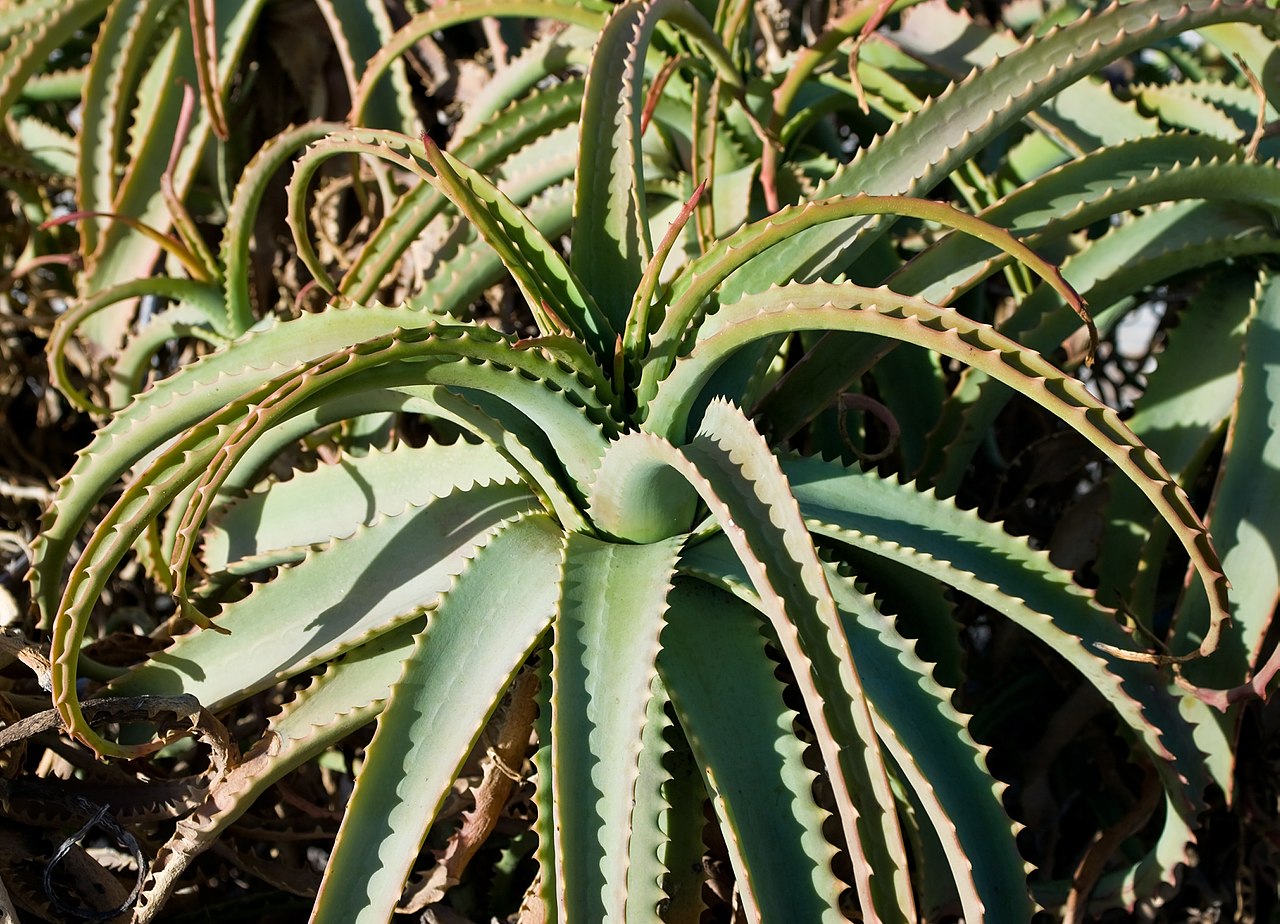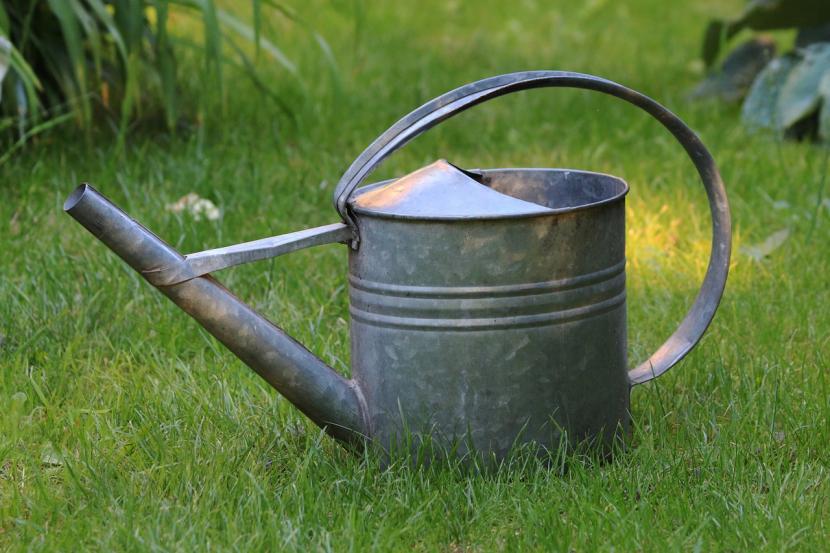
Image - Wikimedia / Nikodem Nijaki
Do you want a succulent tree plant that you can use as a hedge? Do you love flowers in a magnificent color that attracts attention? If you have answered yes to either of these two questions, or both, you are in luck: there is a species that you will surely love. His name is Aloe arborescens.
This plant has a very high ornamental value. Not only can it be used to mark paths, but it will also easily adapt to living in a pot. And if that was not enough, withstands drought and some frosts.
Origin and characteristics of Aloe arborescens

Image - Wikimedia / Ton Rulkens from Mozambique
Known as the octopus plant, candelabra aloe, candelabra, savila or acíbar, it is a species of aloe native to Africa, specifically, its southeastern coast, from sea level to mountainous areas.
It develops as a shrub, with a woody base and often with a single, highly branched stem. Its leaves grow in rosettes, are more or less triangular, fleshy, with a serrated margin and a glaucous green color.
The flower clusters measure 20 to 30 centimeters, and sprout from stems about 50 to 70 centimeters long. The flowers are scarlet orange and tubular. The fruit are dry capsules that protect numerous seeds.
Its total height is up to 4 meters, although the normal thing is that it does not exceed 2 meters in cultivation.
What are the care you need?
If you dare to have a copy, you should know the care it needs to be well. Each teacher has his own booklet, and depending on the conditions of the area they may vary. But, more or less, to give you an idea, I recommend the following:
Location
El Aloe arborescens grows wonderfully outdoors, in direct sunlight. In semi-shadow it may be, but it is not its best place. Its development in these areas is poorer: its leaves do not grow as strongly.
If you are going to have it on the ground, it must be at a distance of at least 1 meter from walls and walls, as well as from other plants that have a similar or greater height.
Earth

Image - Wikimedia / Francabel
It depends on where you are going to be:
- Flower pot: you can use universal substrate (on sale here) mixed with perlite in equal parts. Another cheaper option is to mix fine gravel (a 25kg bag is worth 1 to 2 euros, even less) with 30-40% black peat.
- Garden: grows in sandy soils, with good drainage. From my own experience I will tell you that it does not go bad in those that are poor in nutrients.
Irrigation
The candelabra is a succulent that is very resistant to drought, but on the contrary, it fears excess water. With this in mind, in addition to ensuring that the substrate or soil has good drainage, we must try to water only when necessary. And when is that exactly? Well the short answer is when the earth is completely dry.
To find out if it is, you can insert a thin wooden stick to the bottom, for example: if it comes out clean or practically clean when you extract it, it is a sign that it is time to water. Anyway, so that you know better when it touches and when not, you should know that in principle one or two irrigations a week during the summer and one every 10 to 15 days the rest of the year is enough.
Of course, when you water, pour water until the soil is very moist. And if you have it in a pot with a plate underneath, remove the excess water 30 minutes after watering.
Subscriber
During all the warm months of the year It is interesting to pay it with a fertilizer for succulents (for sale here) following the instructions specified on the package.
Multiplication of Aloe arborescens
It multiplies by seeds and cuttings in spring or summer:
Seeds
The seeds are placed on well-drained substrates previously watered, burying them a little so that they are not very exposed. Then, the seedbed is placed outside, in semi-shade but in an area with a lot of light.
Keeping the substrate moist (but not waterlogged) they will germinate in about 15 days.
Cuttings
It is the fastest way to get new copies. For it, You just have to cut a branch, let the wound dry for a week, and finally plant it in a pot with, for example, a mixture of fine gravel with black peat in equal parts.
Placing it in semi-shade, or even in direct sun if it is spring, it will root in about 20 days.
Plagues and diseases

Image - Wikimedia / Stan Dalone & Miran Rijavec
En general, It's very tough. You just have to try not to overwater so that the fungi do not harm it, and protect it from snails during the rainy season.

Pruning
You can prune it if necessary to early spring.
Rusticity
Resists up to -4ºC.
What is?
It has several uses:
Ornamental
It is a very decorative plant, ideal for growing in pots and / or gardens. It resists drought, high temperatures and also weak frosts. For all this, it is widely used to decorate places with a warm-temperate climate, where rainfall is scarce.
Medicinal properties Aloe arborescens
Share some properties of Aloe vera. Thus, the pulp can be used as healing and antibiotic, so it is a good natural remedy for minor wounds and burns. In addition, it helps you take care of the skin, keeping it hydrated and, also, in case of acne.
Where to buy?
You can get it at nurseries and garden stores, as well as here:
No products found.